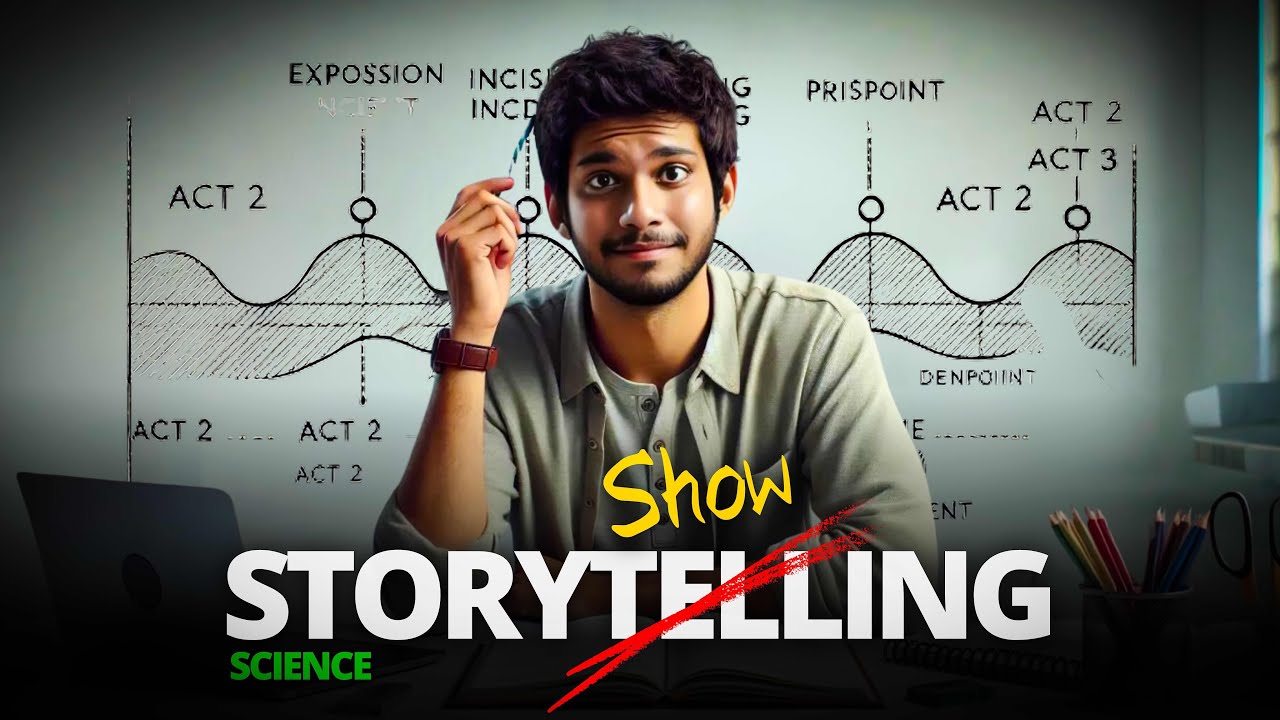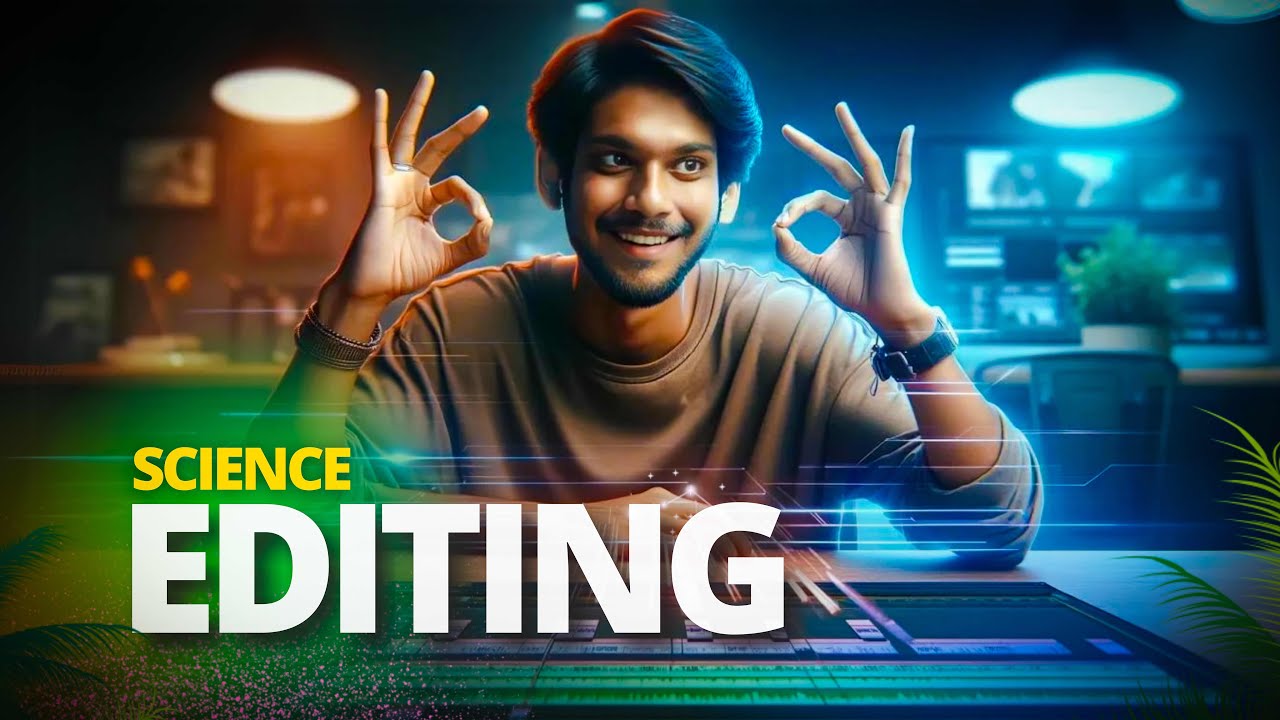How to Master the Art of YouTube Storytelling
Summary
TLDRThis video script delves into the art of storytelling on YouTube, emphasizing its importance in captivating audiences and fostering a strong viewer-creator relationship. It illustrates the concept of 'forward motion' and 'tension' as key elements in crafting engaging narratives, using examples like Mr. Beast's challenges to demonstrate storytelling mastery. The script also covers the significance of words, visuals, and sound in creating a cohesive story, and encourages creators to apply these principles to their content for increased viewer retention and impact.
Takeaways
- 📚 The importance of storytelling on YouTube cannot be overstated as it helps to build a strong relationship with viewers, making content more impactful and shareable.
- 🎨 Storytelling is not a rigid process but a dynamic flow of information that should make viewers feel or understand something, creating a sense of investment in the narrative.
- 🏗️ Storytelling mastery involves setting up a clear sequence of events that build upon each other, creating tension and a sense of urgency, as exemplified by Mr. Beast's videos.
- 💧 The concept of 'stepping stones' in storytelling helps viewers to follow a clear path through the content without getting lost, much like navigating a river with stepping stones.
- 🔊 The three key elements of storytelling are words, visuals, and sound, which when combined effectively, immerse the viewer in the creator's world.
- 🚀 Forward motion in storytelling is crucial for keeping the narrative engaging and moving towards a conclusion, similar to the progression of events in a compelling story.
- 🔑 Tension is a powerful tool in storytelling that creates uncertainty and stakes, making viewers want to stay until the resolution, which can be used to deliver important messages.
- 📉 High retention in videos is achieved by effectively using tension and forward motion to keep viewers hooked and invested in the outcome.
- 📈 The 'Iceberg Theory' by Ernest Hemingway, which involves showing only a part of the story while letting the audience infer the rest, is a technique used by successful YouTubers to convey impactful messages.
- ✂️ Effective storytelling on YouTube often involves cutting down extensive footage to the most engaging parts to maintain viewer attention and deliver the message concisely.
- 📚 A free YouTube course is offered that covers storytelling techniques and strategies for growing a YouTube channel, providing a comprehensive guide for aspiring creators.
Q & A
What is the key to creating a strong relationship with viewers on YouTube?
-The key to creating a strong relationship with viewers on YouTube is understanding and effectively using storytelling. This helps to build a connection that is hard to break and is your most powerful tool on the platform.
Why is storytelling considered a lost art in YouTube videos?
-Storytelling is considered a lost art because many creators neglect its power to engage and captivate audiences, focusing instead on other elements that may not create the same depth of viewer investment.
What is the significance of the 15-second sequence in Mr Beast's video as an example of storytelling mastery?
-The 15-second sequence in Mr Beast's video demonstrates storytelling mastery by efficiently building a shelter within a time constraint and an impending storm, which increases viewer investment due to the urgency and stakes involved.
How does the concept of 'stepping stones' relate to storytelling in videos?
-The concept of 'stepping stones' in storytelling refers to the elements of a video that help viewers follow the narrative without getting lost. These can include dialogue, b-roll, music, and other visual or auditory cues that provide a clear path for viewers to understand the story.
Why is it important to show, rather than just tell, in YouTube videos?
-Showing, rather than just telling, is important because it allows viewers to experience the content firsthand, making it more engaging and memorable. This aligns with the YouTube principle of 'show, don't tell', which enhances viewer understanding and involvement.
What is the role of sound in storytelling for videos?
-Sound plays a crucial role in storytelling by setting the mood, advancing the story through audio cues, and adding depth to the viewing experience. It can be used to create a more immersive environment and to keep viewers engaged.
How does 'forward motion' in storytelling contribute to viewer engagement?
-Forward motion in storytelling contributes to viewer engagement by moving the narrative forward step by step, creating a sense of progression and anticipation. It keeps viewers interested and invested in the outcome of the story.
What is tension in the context of storytelling, and why is it important?
-Tension in storytelling refers to the feeling of uncertainty and stakes that are created when the outcome is in doubt. It is important because it hooks viewers, making them want to continue watching to see how the situation resolves.
How can stakes be incorporated into educational videos to increase viewer engagement?
-Stakes in educational videos can be incorporated by presenting a challenge or consequence for not understanding or applying the information correctly. This adds a layer of importance and urgency to the content, encouraging viewers to pay closer attention.
What is the 'Iceberg Theory' and how does it apply to YouTube storytelling?
-The 'Iceberg Theory', attributed to Ernest Hemingway, suggests that a story should show only a small portion of its content while the majority remains beneath the surface, implied rather than explicitly stated. In YouTube storytelling, this means focusing on the most engaging parts and letting viewers infer deeper meanings or messages.
Why is it beneficial to cut down on content in a YouTube video, even if the content is good?
-Cutting down on content in a YouTube video is beneficial because it helps maintain viewer attention spans by focusing on the most impactful parts of the story. It ensures that the video remains engaging and avoids losing viewers due to excessive or unnecessary information.
Outlines

This section is available to paid users only. Please upgrade to access this part.
Upgrade NowMindmap

This section is available to paid users only. Please upgrade to access this part.
Upgrade NowKeywords

This section is available to paid users only. Please upgrade to access this part.
Upgrade NowHighlights

This section is available to paid users only. Please upgrade to access this part.
Upgrade NowTranscripts

This section is available to paid users only. Please upgrade to access this part.
Upgrade NowBrowse More Related Video

8 Easy Hacks for Viral YouTube Shorts | How to Viral YouTube Shorts

Kenapa ItsSandwich Berhasil Dengan Konten 100 Hari Nya?

Storytelling Science To Hook Viewer Till End | 4 Years in 10 Mins.

How We Edit Videos Using Psychology to Hook Viewer Till Last.

My Shorts Didn't Get Views Till I Discovered This Secret

How Niklas Christl Gained 100,000 Subscribers in 1 MONTH (prodigy?)
5.0 / 5 (0 votes)